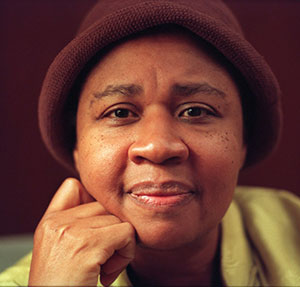JAMAICA Kincaid is a well-known, sometimes controversial, writer of Antiguan descent. She has been described as feminist, rebel and as angry (something she rebukes), and to get a sense of appreciation for this woman, I would just like to really open this article with a direct  quote from her regarding certain readers and which was also previously highlighted in the Huffington Post: “I wish people would just say, ‘I’m too stupid to understand this book’ and maybe just leave things alone. People tend to blame a writer for writing something they’re too stupid to understand.” Now, let’s take a breather and have that sink in and ponder over why you have never heard of this woman before, if you haven’t.
quote from her regarding certain readers and which was also previously highlighted in the Huffington Post: “I wish people would just say, ‘I’m too stupid to understand this book’ and maybe just leave things alone. People tend to blame a writer for writing something they’re too stupid to understand.” Now, let’s take a breather and have that sink in and ponder over why you have never heard of this woman before, if you haven’t.
How many writers have thought something similar to what she said at least once in their writing career? Probably a lot of them; but Kincaid is the only one to actually say it. Now that you know what we’re dealing with, let us move on to observe her work. Today, we bring to the forefront her very short story (also identified as a prose poem by some, and as a poem by yet others), Girl, which, easily found in the online version of The New Yorker, is the ideal fare for one of those small, idle moments in life – standing in a long queue, waiting on the bus, breaks in between cooking – when you need a short story that is indeed short, but also well-developed and entertaining, and full of the kind of Caribbean spunk and sass that could only have come from a writer like Kincaid.
The story has only two characters: a woman and a girl (presumably mother and daughter), and the plot concerns itself with the woman trying to pass off what she considers to be valuable lessons that a young woman must learn in order to succeed and fit into the society in which they live. Girl is unusual, in terms of structure, as it is composed only of dialogue that is reeled off between the characters and appears as a steady stream of spoken words.
This is probably deliberate, as I am certain that Kincaid is smart enough to recognise that the way she uses her sentences — quick and sharp — without breaks or a moment to breathe only serves to emphasise the barrage of words the woman tries to pour into the head of the young girl. For example: “…don’t walk bare-head in the hot sun; cook pumpkin fritters in very hot sweet oil; soak your little clothes right after you take them off; when buying cotton to make yourself a nice blouse, be sure that it doesn’t have gum in it, because that way it won’t hold up well after a wash; soak salt fish overnight before you cook it…” The woman’s words ramble and are continuous so as to be overwhelming, which only further highlights how the girl feels as she hears these things.
Girl also, rather obviously, focuses on Caribbean women and the role of women in society. The fact that the older woman initially appears to be instilling in the young girl rather patriarchal notions of what a young woman should be, underscores the important fact that such notions in the Caribbean are often passed from woman to woman (mother to daughter, aunts to nieces, grandmother to granddaughter, etc.) and while men definitely play a larger part in the oppression of women within the region, there are other women who continue to hold up the umbrella of patriarchy.
However, just when you start to think that the woman in the story belongs to that group of women who seek to oppress other women by adhering to the fixed gender roles within Caribbean society, Kincaid manages to subvert our entire understanding of the woman, her relation to the girl, her relation to her society, and her real lesson to the girl, while showing how Caribbean women are more than aware of their circumstances and are definitely cognisant of the fact that in order to be themselves, to survive, and achieve some semblance of power, it is necessary to subvert what is necessary for female oppression, even if the methods of doing so might appear unorthodox or contradictory to that aim.
Alternatively, a second reader might say that the story is actually not as feminist as it appears, since the woman, while teaching the girl to become independent still bogs her down with all the expectations of woman in Caribbean society.
In either case, there is no doubt that Kincaid’s tale is a little West Indian gem, vibrant with life and beauty and heavy thoughts on women in this part of the world – the kind of story that one yearns to hear in a dramatic reading done by a local actress. Thespians, take note of this one.



.jpg)








